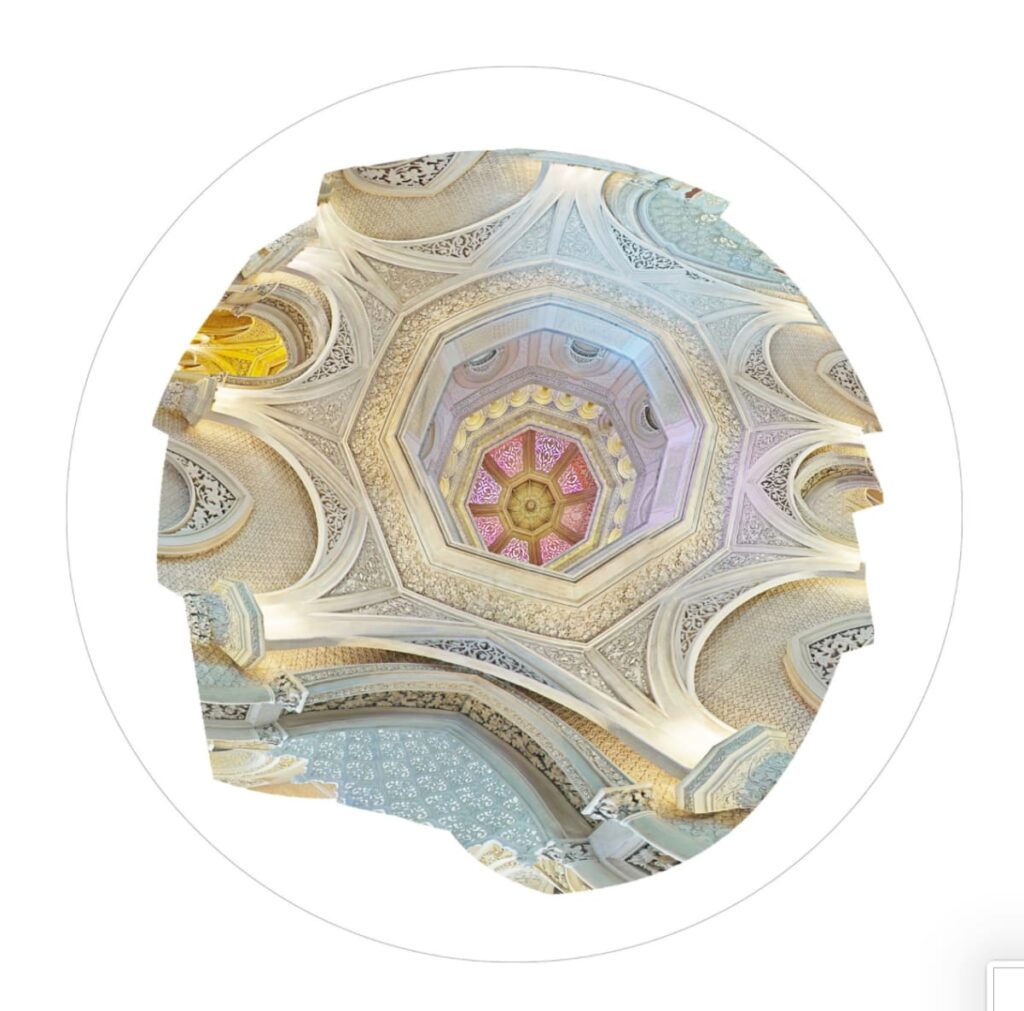Collection Item Image/s
Monserrate Palace, Sintra
Theresa Ganz
Monserrate Palace, Sintra, 2017
Archival pigment print
43 inch diameter
Ruane Center for the Humanities, Ground Floor
About the Work
The friar Gaspar Petro spearheaded the construction of Our Lady of Monserrate’s hermitage and expansive gardens in 1540, on the ruins of a chapel dedicated to the Virgin Mary after the reconquest of the Sintra, Portugal in the eleventh century. Even though neglect, an earthquake, and squatters rendered it uninhabitable to visitors through the seventeenth century, it nonetheless maintained its sacred allure. The Romantic-era poet Lord Byron marveled at Monserrate as “Eden’s Garden” in his narrative poem Childe Harold’s Pilgrimage. The site’s enduring legacy and Byron’s poem piqued the interest of a British trader and art collector, who commissioned the palace that stands there today, replete with Gothic influences, Indian-Mughal decorative flourishes, and Moorish structural elements. The palace perfectly represents the globally inspired eclecticism of the Romantic movement.
With her web camera, Ganz captures and reconstructs Monserrate Palace’s dome so that it appears alternately concave and convex, depending on the viewer’s vantage point. “The viewer is never afforded enough distance to gaze out,” says the artist. They are instead “confronted with a maze-like, internal world of warped detail and impenetrable surface” that makes visible the unique mish-mash of culturally specific adornments. The palace and the artwork seem to ask the question: how can a single building tell so many stories at once without distorting the truth?

